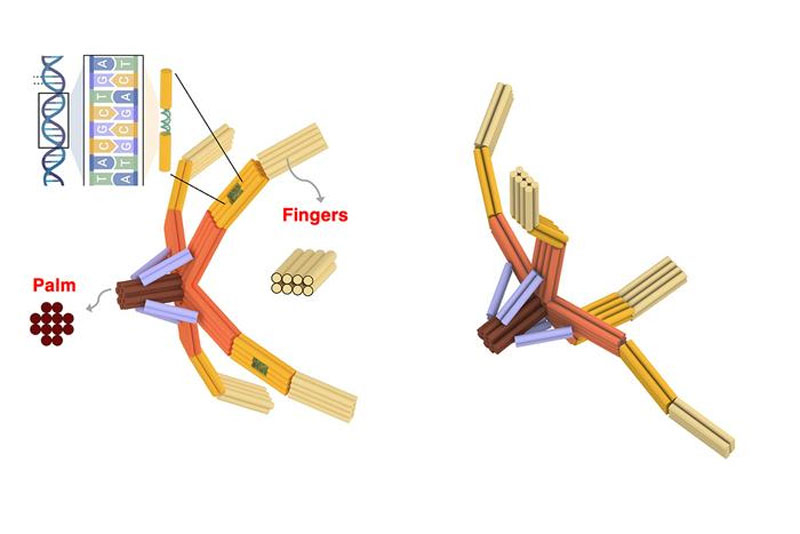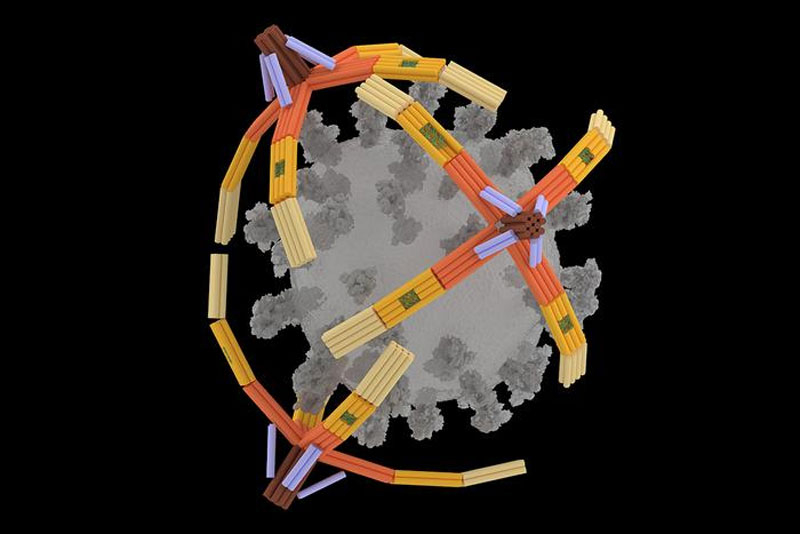The University of Illinois at Urbana-Champaign has created the NanoGripper, a kind of four-fingered hand made from a single piece of DNA. The fingers of this “hand” automatically tighten around the virus, reacting to its molecular composition. After this, the action of the virus is blocked – it cannot penetrate the cell and infect it. In addition, NanoGripper is capable of delivering drugs to target cells, which gives hope for its use in the fight against cancer.

Image source: University of Illinois at Urbana-Champaign
According to scientists, this is the first work of its kind to create a nanometer-scale capture from a single unbroken strand of DNA. The thread is bent repeatedly to reproduce a four-fingered grip with three movable joints on each “finger.” The NanoGripper was tested to capture the COVID-19 virus: the sensing elements of the gripper joints were tuned to detect the spike proteins of the virus. As soon as the virus entered the capture zone, it was immediately grabbed.
The foreign element attached to the virus prevented it from entering the cell. Combined with the diagnostic system, this allowed for easy identification of the pathogen. The fixed and immobilized virus became a target for fluorescent molecules, which revealed its presence. Thus, NanoGripper opens up the possibility of counting viruses in biomaterial, providing ultra-precise diagnostics.
The proposed solution will not help cure an already infected person, but can be used as a preventative measure. For example, in the form of a nasal spray that creates a protective barrier against viruses. It will be enough to drip your nose, and original “traps” for viral particles will be ready.

As the researchers note in their work published in the journal *Science Robotics*, the discovery has wider potential than stated in the article. NanoGripper could be used to deliver cancer drugs directly to cells, target other viruses such as HIV or hepatitis, and for diagnostics.
«”We aimed to create a nanoscale soft material robot with never-before-seen grasping capabilities that could interact with cells, viruses and other molecules for biomedical applications,” the scientists explain. “We use DNA because of its unique structural properties: strength, flexibility and programmability. Even for the field of DNA origami, this is innovative in terms of design principle. We bend one long strand of DNA back and forth to get all the elements, both static and moving, in one step.”